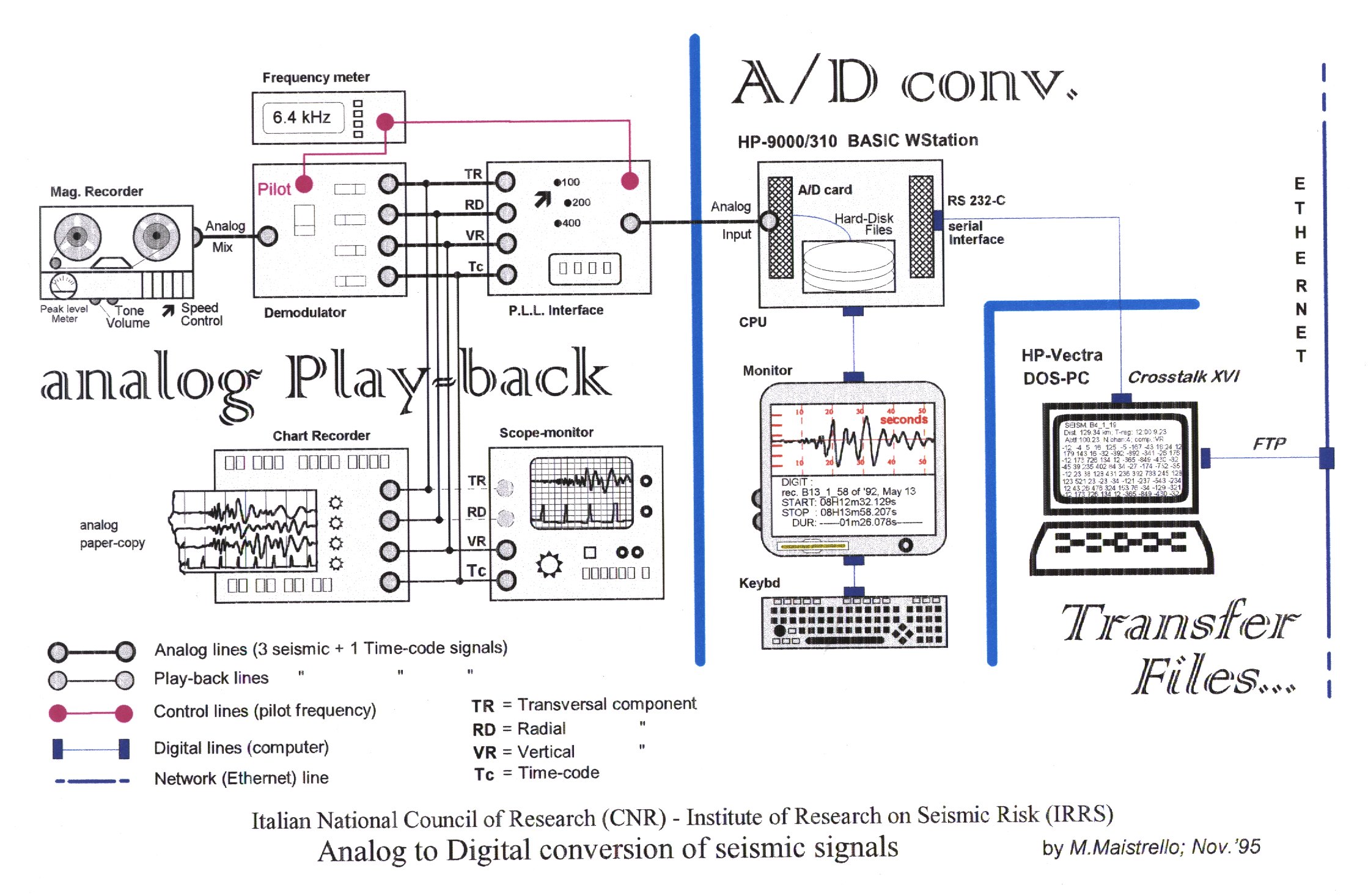|
MENU_HP: the general
wiring diagram
|
The whole design is functionally built up by three main parts:
-
the analog PLAY-BACK: where the weak seismic signals (low amplitude,
low frequency) recorded on the magnetic tapes in FM are demodulated and
sent (through the PLL unit) to the A/D converter (a PC card); at the same
time they are reproduced on paper, for a local monitoring. In the play-back
operation, it's extremely important to pay attention to the Pilot-signal
(which comes out from the demodulator, and is proportional to the velocity
splitting of the tape): its normal value has to be the nominal one (generally
6.4 kHz), if not it's possible to adjust the tape velocity;
-
the Analog to Digital (A/D) conversion. The HP-98640A programmable card
(12 y old!) is still perfectly operating!!! With the PLL facilities, it's
possible to choose the sampling frequency: 100-200-400-800 samples/sec.
for 2 (at least) to 4 channels max. (in any case 1 channel is the Time-signal);
-
the final transfer-file step. In order to distribute the digitized seismograms,
and put them into our seismic DataBase, we copy them from the Basic HP-Workstation
to a local DOS-PC, using the common Crosstalk-XVI (Microstuf, Inc.,
'85) communication software. From this local DOS directory, they can then
be transferred to the other Workstation through the Internet facilities.
For this purpose, we use the PC/TCP Network Software for DOS (FTP Software,
Inc., rel. 2.2, '93), with which we can exchange information with other
computers through a TCP/IP network.


